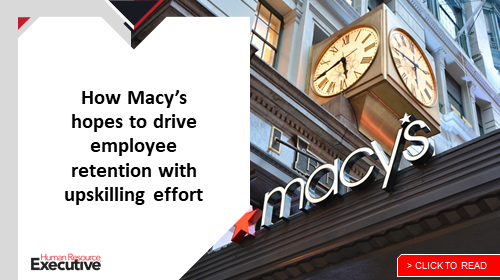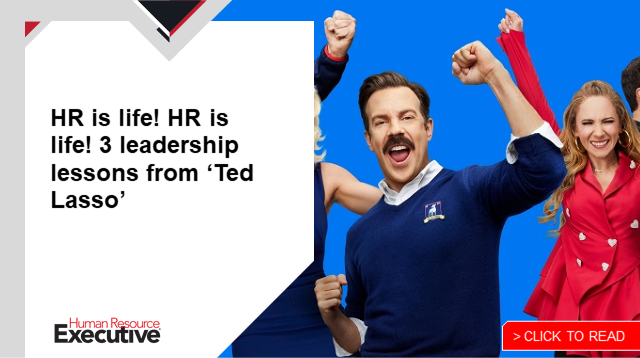Amid the Great Resignation, employers are facing a new challenge: How can they attract and retain talent in an exceedingly hot job market where record numbers of workers are leaving their jobs?
Higher pay, better benefits and other enviable perks are all on the table, to be sure. But many are finding that the secret sauce is a strong culture—one where employees feel valued and want to work. It’s the culture—“the invisible sticky stuff that keeps us at an organization and very much impacts our experiences there,” says Gianna Driver, chief human resources officer at cybersecurity firm Exabeam— that can make the difference.
Related: From better benefits to higher pay, employers are upping the ante on talent
While there is no magic formula to creating a high-performance culture, the first thing organizations should know, Driver said, is pretty simple: You’ve got to make sure you’re prioritizing it.

“Culture is going to happen whether we are intentional about it or not,” Driver said Tuesday at HRE’s HR Tech Virtual Conference. (The free online event runs through Friday; register here.) “Culture evolves. Culture is not something that is set it and forget it. It’s something that takes intention. It takes a lot of tending and nurturing.”
While strong company culture is not uniform, there are steps organizations can and should take to create one, Driver said.
Embrace humanity and inclusivity. First things first, Driver said: We are humans first, and employees second. “Gen Z and millennials are unwilling to engage with organizations and employers who don’t embrace human-first initiatives,” Driver said. Employees want to know: What are you doing for my career development? What are you doing for mental health and financial wellbeing? What sort of policies do you have for parental leave or bereavement leave? “They want organizations that embrace the human part, first and foremost,” she said. “In order to have a high-performing workplace, we must first embrace the human part of the work experience.”
 Exemplify and communicate meaningful connections. “We are finding that organizations who are committed to continually connecting, meaning to the everyday actions people take, are retaining their employees in this era of the Great Resignation,” Driver explained. She said that when she was considering joining Exabeam, for instance, she thought about the mission of the organization: Was it an industry that resonated with her? After she researched more about cybersecurity and realized it was “at the forefront of a lot of topics and conversations, like election interference”—she found that the answer was yes. “I realized I actually can be something that does great and good for the world,” she said. That’s a question company leaders need to ask: Do your workers feel like they are part of something greater than themselves?
Exemplify and communicate meaningful connections. “We are finding that organizations who are committed to continually connecting, meaning to the everyday actions people take, are retaining their employees in this era of the Great Resignation,” Driver explained. She said that when she was considering joining Exabeam, for instance, she thought about the mission of the organization: Was it an industry that resonated with her? After she researched more about cybersecurity and realized it was “at the forefront of a lot of topics and conversations, like election interference”—she found that the answer was yes. “I realized I actually can be something that does great and good for the world,” she said. That’s a question company leaders need to ask: Do your workers feel like they are part of something greater than themselves?
Continually listen to employees. “We want to create workplaces where people feel seen, valued, heard, wanted,” Driver said. Employees want to know they are special and important, and that the organization has a desire for their unique value. Continually communicating with employees—and listening to them—is vital to achieving this, Driver said, and HR leaders are the ones who should lead the task. “What we in the HR space are tasked with doing is creating workplaces that foster connection. I do believe we hold that torch,” she said.
Prioritize psychological safety. Psychological safety is the idea that we can take risks, that employees can say what they think or how they are feeling, and there will be no repercussions or negative consequences, Driver explained. “It’s important that organizations allow employees to dream and allow employees to fail,” she said.
 Be clear about policies and procedures. It’s one thing if you have a specific culture and specific qualities in employees that you expect—it’s another to actually verbalize those expectations to your employees and make sure they are clear, she said. “What our employees want to see is that we’re going to codify and be clear about what’s OK and what’s not OK and that we’re going to have consistent treatment across the organization irrespective of race, color, religion, location, etc.”
Be clear about policies and procedures. It’s one thing if you have a specific culture and specific qualities in employees that you expect—it’s another to actually verbalize those expectations to your employees and make sure they are clear, she said. “What our employees want to see is that we’re going to codify and be clear about what’s OK and what’s not OK and that we’re going to have consistent treatment across the organization irrespective of race, color, religion, location, etc.”
Be accountable. Lastly, when an organization prioritizes and claims things as part of its culture—like being moral, saying it listens to employees, and allowing workers to make mistakes—it needs to be accountable to those priorities, Driver said. “Our employees don’t expect perfection,” she said. “Employees want to know we’re being real, that we’re being authentic and we’re holding ourselves truly accountable to results.”
Watch the full session on-demand here.
The post Want to create a high-performance culture? Be intentional appeared first on HR Executive.